Before you succumb to the flats of annuals at the garden center, take a tip from articles that stress cleaning, decluttering and reorganizing your home and do the same for your garden work area — whether it’s a potting shed or greenhouse, small potting bench or shelf in the garage. Not only will you learn what you have and what you need before heading to the nursery; you’ll also benefit from a clean, organized space during gardening season.
If this sounds overwhelming, or if the weather makes it impossible to find your garden shed, much less spend time cleaning it, don’t despair. You can do this in small steps or even wait until a warm weekend in May. And whenever you do clean, the reward can be a place that works for how you love to garden.
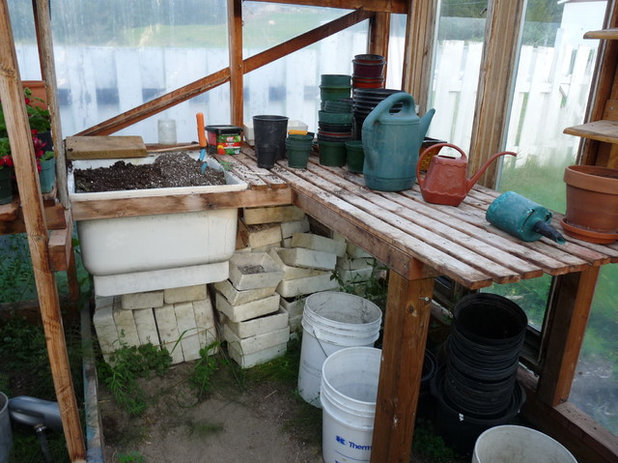
The organizing advice for your closets also applies to your garden work area. This is the time to see what you have, clear out what you don’t need and organize what’s left so that everything will be easy to find once you’re gardening in earnest.
Start by making a complete inventory of what you have. If you have the room, pull everything off the shelves and out of the corners into a central sorting space so you can really see what you have — and not be tempted to ignore those things in the back. Weed out everything that is broken, extraneous or no longer needed.
Now look at what remains. Consider items in general categories: pots, tools, chemicals.
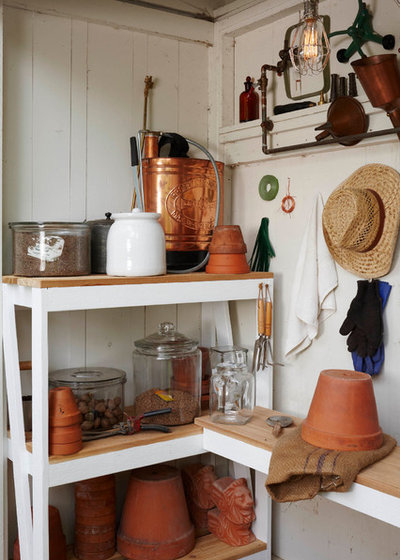
Art | Harrison Interiors & Collection
Pots and containers. Every gardener seems to end up with stacks of pots and other containers in a variety of sizes. It’s tempting to keep them all. But if your pots have taken over your storage area, you should thin down your collection.
The first to go should be those that are broken or cracked. Save some, but not all, pot shards from terra-cotta pots for the bottoms of containers if you worry about soil getting out when you water.
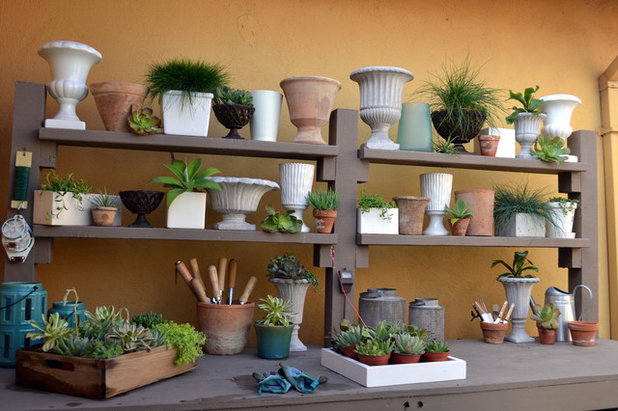
Living Gardens Landscape Design
Evaluate what you really need and use. This might include some plastic pots of different sizes for growing vegetable starts, some ceramic pots for your deck and some terra-cotta pots for the garden. Then keep what you love or and will use. Give the rest to someone who will appreciate them, whether you offer them online, set them out on a curb or donate them to a community garden.
Tip: Nurseries will often take back plastic pots that are 1 gallon or larger. When you head to the store to buy new plants for spring, take the pots with you.
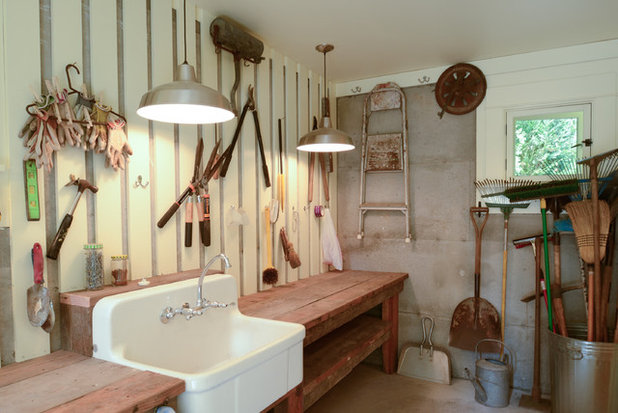
Paul Johnson Carpentry & Remodeling
Tools. Tools, and hand tools in particular, also seem to multiply. Get rid of the tools you no longer need or use, whether they’re extra trowels or that trimmer for the hedge you removed a few years back.
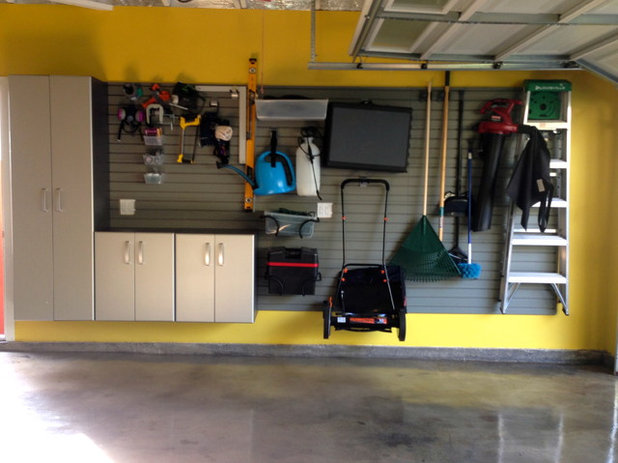
It’s easy to let tool maintenance go — in spring and summer, you’re too busy using them; in fall you’re too busy doing other maintenance chores. Why not clean and repair your tools now that they’re out and before you start using them regularly? At the same time, arrange for needed maintenance of things like lawn mowers. You’ll beat the crowd at the repair shop at the start of mowing season.
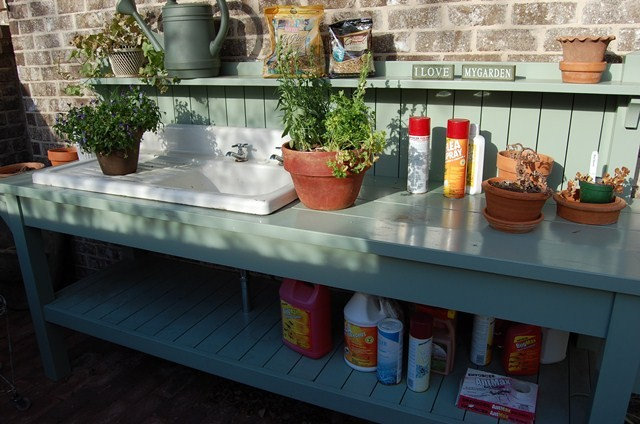
Between Naps on the Porch
Chemicals and fertilizers. Check use-by dates on fertilizers, sprays and other chemicals to be sure they’re still viable. Even more important, decide just how many of these you will actually use. This might be a good time to make a commitment to switching over to integrated pest management and more natural pest and disease control.
Dispose of these items according to package directions and local ordinances — it may mean a trip to your local site for hazardous waste disposal.
Learn how to switch to an organic landscape plan or discover an interesting approach to trapping garden pests.

Eskuche Design
Garden furniture. Clean and make any repairs to your garden furniture so it’s ready to use when the warm weather arrives. If it’s too cold to do this now, note what needs to be done, including repainting, and get any needed parts or materials. Look at your pillows and cushions to see if they need replacing or simply a good cleaning.
Tip: Sales on outdoor furniture and related products seem to start earlier and earlier every year; if you can wait a couple of months, you might find good deals while the summer is relatively young. If you see something you love, though, you might need to get it before it disappears.
How to Keep Your Outdoor Furniture Looking New
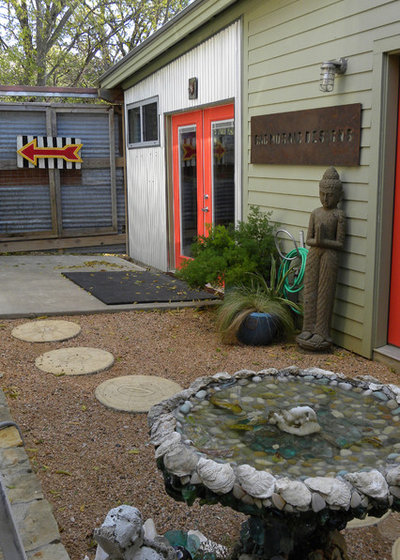
Sarah Greenman
Garden accessories. Garden accessories and decor items can take a beating. Those hanging solar lanterns may be tattered and torn after several seasons. Birdbaths and birdhouses may need some repairs and paint. Get rid of things that are no longer functioning or no longer fit your garden style, then make any repairs or note what might need to be painted or otherwise renewed once the weather warms up.
Bits and pieces. Once you’ve made it through all the big categories, you’ll probably be left with a few odds and ends. If they’re things you use, even if only occasionally, such as long-armed gloves for tackling the rose pruning, then keep them. If, on the other hand, you find bulb diggers even though you no longer grow bulbs, then add them to the get-rid-of pile.
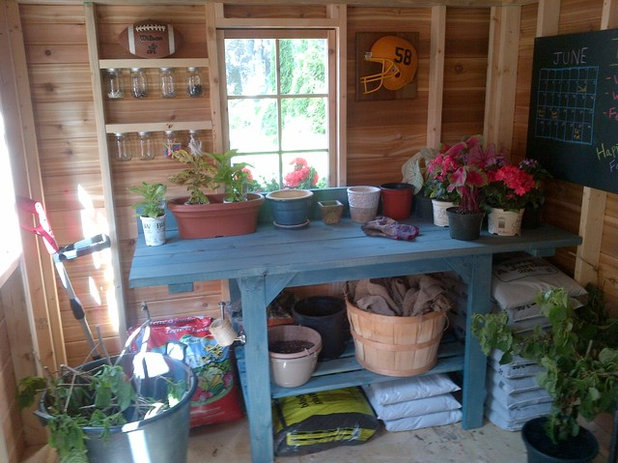
Summerwood Products
Putting it back together. Wipe or brush down the space — it doesn’t need to be spotless, but getting rid of spiderwebs is a good idea.
As you put things back, think about where they really should go. Put things you use all the time in an easy-to-reach place, such as hand tools in a bucket or rakes hung on a wall. Think of ways to corral twine, tape, labels, dabbers and other small items. Do you have a place to neatly stack bags of soil or galvanized metal containers to decant them into? Perhaps you should get a small toolbox to store your irrigation paraphernalia.
See how to make a wall organizer out of a yardstick
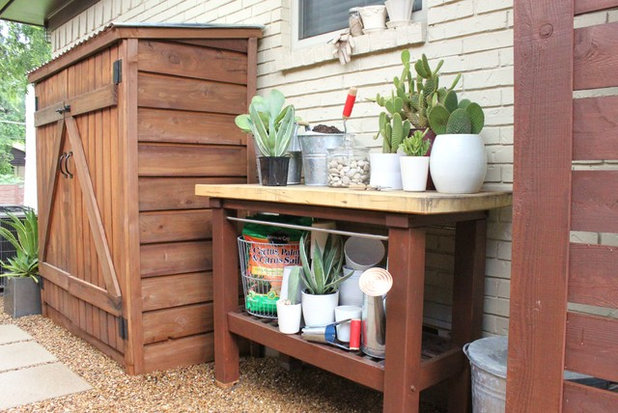
The Cavender Diary
Would it help to add extra storage, especially for larger items or extra containers? A cabinet with a lock will help you store chemicals safely.
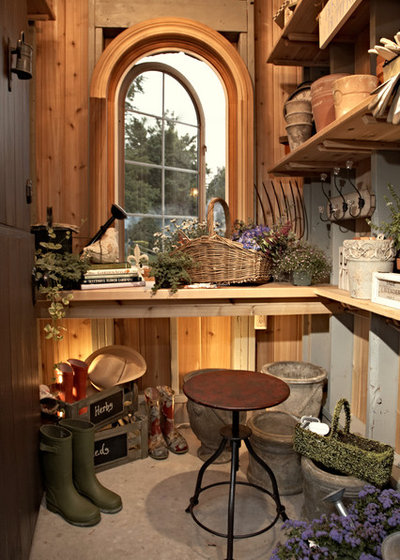
VanBrouck & Associates, Inc.
If this is a space you’ll be spending some time in or is highly visible, look for ways to personalize it. Perhaps one of those pots you were going to get rid of would work for holding the hand tools; a small bin or basket could be a good place for tossing garden gloves; and a spool could make it easy to cut off lengths of garden twine. Whatever you choose, simply knowing what you have and where it is will make the beginning of the gardening season that much easier.





